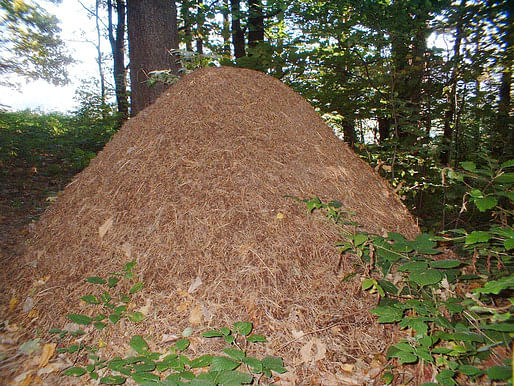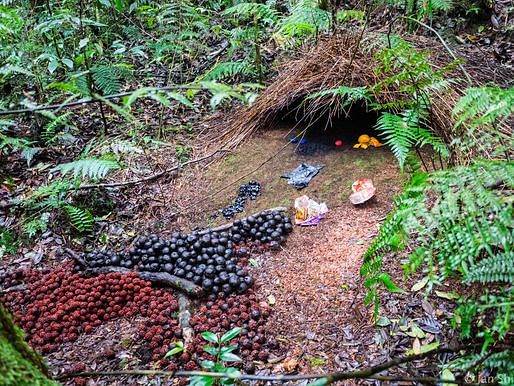
Scientists have discovered that scorpions design their burrows to include both hot and cold spots. A long platform provides a sunny place to warm up before they hunt, whilst a humid chamber acts as a cool refuge during the heat of the day. — Science Daily
This recent discovery of scorpion architecture adds to a sizeable list of impressive non-human architecture.

Anthills consist of a complex network of paths. Comparative to the size of an individual ant, these structures are mega-skyscrapers.

Likewise, termites build huge structures that have been dubbed "cathedrals." Reaching up to 6m high or more, termite cathedrals are clustered in large arrays that cover whole landscapes.

This complex web of branches was built by the vogelkop gardener bowerbird. In direct refutation of the "less is more" aesthetic exemplified by both ants and Ludwig Mies van der Rohe, these birds embellish their structures with any bright things they can find.
 Primates, including humans, are probably the most avid builders. For example, from an early age, orangutans learn to design and construct elaborately woven nests high in trees.
Primates, including humans, are probably the most avid builders. For example, from an early age, orangutans learn to design and construct elaborately woven nests high in trees.
Far from trivial – and humor aside –, studying animal architectures helps destabilize the normative understanding of architecture as a strictly human domain of activity. Certain studios – like Animal Architecture – both draw inspiration from non-human design and develop collaborative practices with non-humans. Decentering the human as the center of architectural thinking is a necessary step in fostering a deeper understanding of the complex mesh of interconnectedness that is ecology. Without this step, humans will continue to practice architecture without regard for a larger context, which is why the profession already accounts for nearly half of US carbon emissions.
No Comments
Block this user
Are you sure you want to block this user and hide all related comments throughout the site?
Archinect
This is your first comment on Archinect. Your comment will be visible once approved.